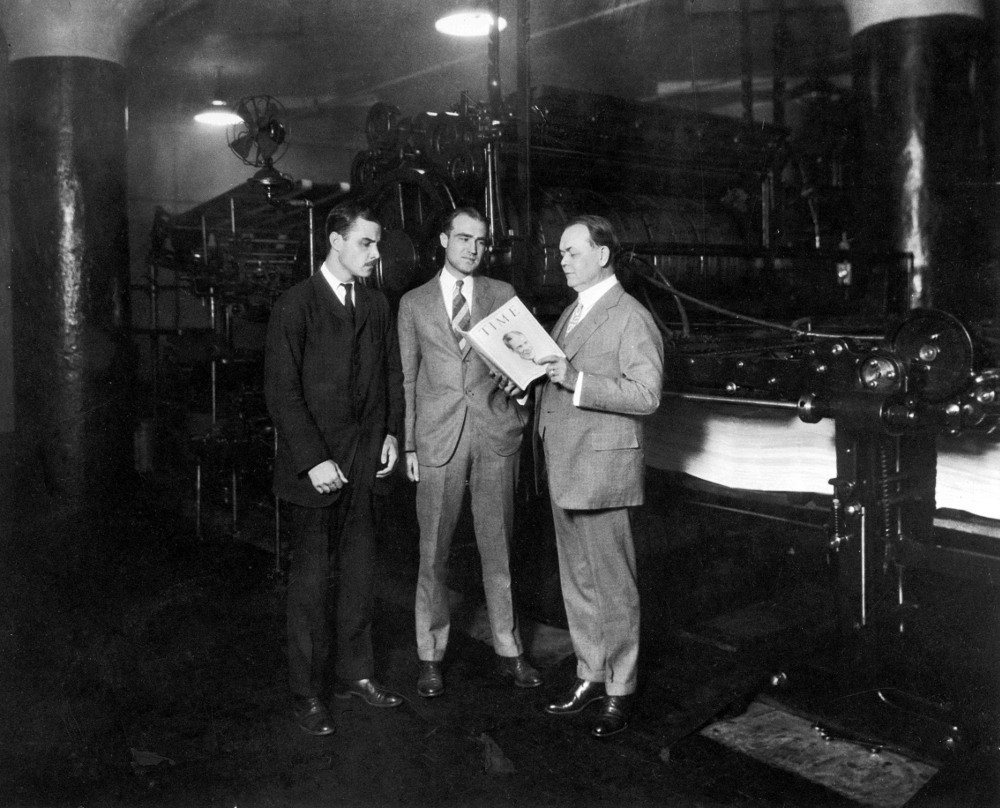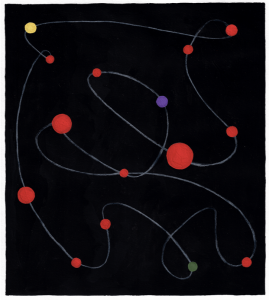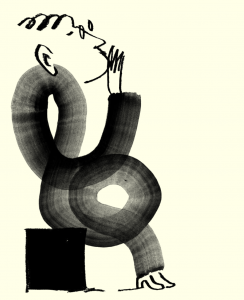Port’s European editor Donald Morrison on the history of Time – the magazine that he called home for over a decade

Was the 60s magazine world really a golden age of three-Martini lunches, outrageous expense accounts and office sex? Basically, yes. At the same time, it was also a place where quality journalism thrived. An ex-Time editor laments the lost days
It was the best of Time, it was the worst of Time. It was the summer of 1967 and my first day of work at what was then the world’s most influential magazine. I strode into the Time & Life building in midtown Manhattan and, demonstrating the reporting skills that would soon make my reputation, promptly got lost. A parvenu from the provinces, I had never seen a building so vast, so elegant, so quietly intimidating: 48 stories of granite and glass, 32 stainless-steel-clad elevators, swarms of snug-shouldered men and pencil-skirted women. A scene straight out of television’s ad-biz nostalgia series Mad Men – much of which is filmed on the 37th floor today. After two wrong elevators and three incorrect floors, I located the editorial department. It was 8:15 am. I prayed that my 15 minutes of tardiness would pass unnoticed.
They did. For another two hours. Until a just-arriving receptionist informed me that, at Time, nobody got to the office much before 10:30 and then didn’t do any real work until late afternoon, when the bosses staggered back from their three-Martini lunches. Welcome to the golden age of magazines.
Over several decades in the Time empire, I savoured the first Martini of print’s golden lunch hour as well as its last. I travelled the world at the magazine’s expense, dined with princes and policemen, interviewed presidents and something else beginning with P that I can’t remember (Time’s energetic writing style favored alliteration, among other quirks). It was a wonderful life, financially secure and intellectually challenging, and I was especially pleased to work for the most politically powerful, most professionally polished player in print publishing (sorry, it’s a hard habit to break). Newsmakers hastened to return my calls when they learnt I was from Time. Nabobs lobbied to get their face on the magazine’s red-bordered cover.
From 1923, when Yale classmates Henry Luce and Briton Hadden, both 24, launched Time as an innovative news digest for “the busy man”, the company grew to embrace dozens of now-famous titles (Life, Fortune, Sports Illustrated), a book division, and film and broadcasting operations, all under the Time Inc umbrella. Time-Life buildings dotted the globe – the one in London’s New Bond Street still bears the name, under different ownership – and Time Inc bureau chiefs outranked US ambassadors in the pecking orders of many foreign capitals. Haddon died young, but under Luce the company exercised an outsize influence on 20th century America. His magazines could launch or sink careers in politics, business and entertainment. They could start wars (or at least sustain them, in the notorious case of Vietnam) and shape the global conversation. Luce’s widely read 1941 essay ‘The American Century’, a term he borrowed from HG Wells, defined the country’s exalted self-image and set the course of its interventionist foreign policy for decades.
If you’ve been reading the business pages lately, you may have gathered that Time’s time has passed. The newsweekly and its siblings, which include the 100 or so magazines of Britain’s IPC, are losing readers and advertisers to the internet. At Time itself, worldwide circulation has dropped from more than 6,000,000 when I was there to less than 4,000,000 today. The parent company, now called Time-Warner, is essentially in the television and movie business. The publishing division, still known as Time Inc, accounts for only 12 percent of overall revenues, and profits are declining.
Of course, nearly all magazines are limping these days. Newsweek, for decades Time’s chief rival, closed its print edition in December. But when the malaise hits Time Inc, the world’s largest magazine publisher, it is big news. Time-Warner recently announced that it is getting rid of all its magazines by spinning them off to shareholders as a stand-alone operation. The new company is expected to be saddled with a share of Time-Warner’s prodigious debt. (By contrast, Rupert Murdoch is spinning off his print holdings debt-free.)
Prospects for survival are thus highly uncertain. Luce, who died in 1967, would have wept. As I do today, especially for a digital generation that will never know the glory that was Time. Glued to their social-networked devices, they will remain clueless about the excitement, the romance, and the glamour of a glossy-paged industry that once held millions in thrall – a near-mythical realm where style and quality mattered. Luce and his successors did not invent magazines, but they knew how to do them right. And they treated the help like family.
A few days after my arrival, I was invited to join the Time softball team in the New York publishing league for a decisive after-work game. Opponent: Newsweek. I had just arrived at the Central Park playing field when, in the distance, I saw an enormous black limousine bounding over the lawn, pursued by angry mounted policemen. A Time secretary emerged from the limo with a lavish spread of shrimp, salmon and chilled white wine, along with supporting napery, cutlery and glassware (no Styrofoam, she had instructed the caterer), as well as a silver tea service. The police and their horses were stunned, as were the poor Newsweek players, who had only a few cans of beer to sustain them. We won the game. The limo driver received a summons, which the magazine paid along with the catering bill.
Keeping the talent well fed was a Time tradition. On closing nights, as we scrambled to put the magazine to bed, there was an evening-long buffet on the main editorial floor. And a feast it was: jumbo shrimp (the writers loved that oxymoron), Caesar salad, roast beef carved to order, cheese and dessert. A drinks cart, laden with wine and spirits of all colours, would rattle up and down the corridors. This bounty, I was told, had been introduced to deter us from repairing to the neighborhood’s many watering holes, from which some employees would return drunk or not at all.
Drink was an occupational hazard at Time. I developed stomach trouble until I began boycotting the drinks cart. Colleagues lapsed into alcoholism – some never to return, others rescued by the company’s generous healthcare plan, which covered rehabilitation. I helped coax two friends into rehab; both returned a few months later, sober and sheepish, and went on to successful careers. Eventually, the magazine sobered up. The week I became a senior editor, I learnt that my duties included presiding over a locked drinks cabinet, prudently doling out spirits to my small staff. We were entitled to one bottle a week. I felt as if I were an officer in the British Navy, dispensing rations of rum.
The other office hazard was sex. Time for many years maintained a curious gender apartheid: men got to be writers, while women were fact-checkers (or researchers, as they were officially called). The magazine paired a writer with a researcher on every story, and the two would work closely throughout the week. Inevitably, affairs blossomed and marriages wilted. One morning, after a particularly difficult close, I arrived to find a telegram addressed to the staff, signed jointly by a writer and a researcher I had last seen arguing over their story on Richard Nixon. The telegram announced that, sometime in the wee hours, they had slipped out of the building, hopped on a plane to Florida and got married. The researcher, as was the custom, resigned from her job; the writer stayed.
Time’s generosity with expense accounts was legendary, though it took me months to work up the nerve to take a source to lunch. I favoured cheap restaurants and, when travelling, flew economy even though first-class was permitted. Eventually, a kind superior told me I was giving the magazine a bad name. In his graceful 1997 autobiography, One Man’s America, my longtime boss Henry Anatole Grunwald recalled: “In one case the question arose whether the cost of moving the mistress and the horse of one reassigned correspondent could be charged to the office. Granted. Another reporter put on his expense account the single and unelaborated statement ‘trip down the Nile, $25,000.’ Granted, but correspondent subsequently fired. Items like ‘orchids and caviar for Maria Callas, as well as paté for her poodle’ raised no accountant’s eyebrow.”
Nor were brows lifted when Time Inc executives commandeered the company’s many jets and helicopters – and not always to cover stories. Inspecting a new Time Inc subsidiary, an editor was suddenly called back to Manhattan, only an hour’s drive away. “Get me a helicopter,” he barked at the closest secretary. My ex-colleague Christopher Byron, in his aptly titled 1986 memoir The Fanciest Dive, recounted the secretary’s reaction: “I didn’t know what he was talking about. I thought maybe it was some new Galleria delicacy, some triple-scoop dessert with a propeller on it.”
Still, we earned our perks. I was in the office until dawn at least once a week for several decades. Mercifully, limos were available after 8 pm to carry home the weary, even to distant weekend homes. We labored under a system guaranteed to cause heart attacks, which felled a shocking number of my colleagues. Luce and Hadden, perhaps influenced by the time-and-motion studies of Frederick Winslow Taylor, had divided the journalistic process into its constituent parts. Correspondents around the world would send in raw dispatches, which, along with library information dug up by researchers, were woven into a coherent story by writers in New York. The result was then heavily mauled by senior editors, most of them promoted writers, to comply with the magazine’s rhetorical style and their own inner demons. Correspondents had to wait until the magazine was published to see what happened to their reporting, which was sometimes distorted beyond recognition. Time allowed no bylines, so none of us could claim any real credit for our work.
It was a classic case of Marxist alienation, the separation of a worker from his product. We seethed with alienation, salved partly by a sense of solidarity in our shared abuse – and by the idea that our output was actually pretty good: well written, thoroughly researched, never dull. For me it was a subsidised education: I learned more about structure, narrative and concision in my first months on the job than I ever could have in a graduate writing programme. My colleagues and I may have been slaving in a gilded cage, but we were proud of our eggs.
Well into my years at Time and things began to change. Bylines were introduced. Women became writers and even senior editors. Correspondents in the field got to see stories before publication so they could demand changes. Writers were encouraged to express themselves. A better Time indeed, but trouble was coming. Luce fell into a swoon, the garden died; God took the internet out of His side. The web and its associated disruptions posed a challenge that Time has never quite risen to. The magazine remains lively, but print revenues are dwindling far faster than digital revenues can compensate for. When I left my final post in London a decade ago, I said goodbye to a Time team of 32 professionals; now there are barely enough to fill a black cab. News bureaux from Paris to Los Angeles have been closed. Benefits and frills have been squeezed. No more first-class travel. Gone are the limos after eight.
My dear old Time & Life building may be gone soon, too. The company is said to be studying a move to cheaper quarters, and chiselling that storied name off the façade. I sometimes pass the building on my visits to New York, reminded of all those rosy-fingered dawns I staggered out into after a long night of doing decent work.
That is the wondrous thing about print. Unlike the internet – with its slapdash blogs and evanescent tweets, formats that soon make words obsolete – print is physical. It endures. As a result, writing for the printed page seems to elicit greater care than it does for the glowing screen. And so, long after I have vanished, many of the hundreds of pieces I crafted in the House of Luce may still be read, on glossy paper. To me, that is the best of Time.
Over a long career at Time, Donald wrote for every one of its departments, and edited its Asian edition out of Hong Kong and its Europe edition out of London




